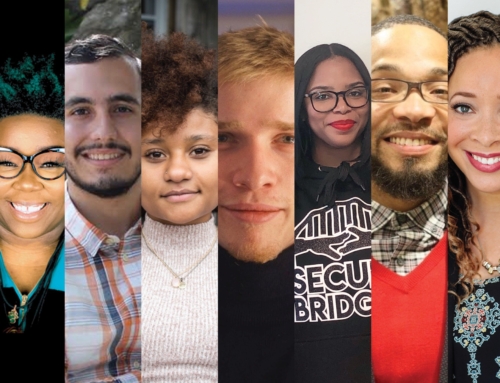Between doubling its employee count in the last 60 days and raising $6 million in Series B funding (with $5 million from investors and $1 million through Silicon Valley Bank), Madison startup, EatStreet, is a young company that has exploded onto the food ordering service scene. Founded in 2010 by UW-Madison graduates Matt Howard, Alex Wyler and Eric Martell, EatStreet is a free online and mobile food ordering service that connects users with their favorite food from a variety of local restaurants. Users can sign up with EatStreet to order food, receive weekly deals and ongoing rewards and donate 5 percent of their order to a local nonprofit.
Today, EatStreet serves 75 cities nationally, with the goal of reaching 150 cities by year-end. We interviewed EatStreet co-founder Matt Howard to discuss the strategy behind his company’s growth and plans for its future. Howard also shares some candid advice for fellow entrepreneurs looking to expand their companies. Hungry for more? Check out EatStreet’s website, and don’t hesitate to try their service for yourself: https://eatstreet.com/madison.
Q: What is your background?
I was born and raised in Wisconsin, and attended UW-Madison. Throughout high school and college I held sales jobs, selling everything from athletic running shoes to cars. My sales background helped prepare me for my role at EatStreet. I founded the company between my sophomore and junior years at UW-Madison and upon graduating in 2011, focused all of my attention on growing the company.
Q: When did you get the urge to start the business?
We realized, after talking to a few local restaurants and users, that there was a need in the market for a different kind of food service provider. Both groups were looking for a better online food ordering service than what was available in the Madison market at the time. Restaurants especially did not like the customer service they were receiving from their provider. With a large demand backing the launch of EatStreet, we were able to get restaurants signed up for the service before we even built the product.
On the user side, we heard from many college students who were unhappy that they were being charged an additional fee with their current food ordering service. Users were paying a $0.75 fee to place an order. Their feedback encouraged us to start this business as well. We realized there was a need in the market for a better solution.
Q: What resources did you use to get EatStreet going?
Eric Martell and Alex Wyler were able to provide the coding background necessary to get the company off the ground. Since we started the company, they have taken lead on product development and enhancements, and my main focus remains on running the business through sales and customer service. In getting the business launched successfully, my goal was to maintain the customer base we already had and continue to expand our market reach.
Q: Why do you think your business model will be successful in the marketplace?
Restaurants need a company like EatStreet to focus on what they do best – making food. We handle all of the ordering steps and online transactions, and we even offer restaurants a mobile friendly ordering process. I think a restaurant is successful when it can focus on making food and providing the best customer service possible. We help streamline that process.
We make it very easy for customers to use EatStreet too. All they need is one username and password to be able to log on and have instant access to local food. It’s very convenient. Users don’t need to sit on hold to wait for someone to answer the phone and take their order. EatStreet eliminates phone calls and even helps alleviate language barriers.
Q: How does your service differ from your competitors’?
From a user standpoint, there are a few features that make EatStreet different from our competitors. When users sign up with EatStreet, they receive a weekly newsletter that lists specials and promotions from our restaurant partners. We also offer a rewards program. Every time a user places an order, they get a coupon to a local restaurant. In addition, our users can donate five percent of their order to a local nonprofit organization.
On the restaurant side, we provide restaurants with their own custom apps and mobile optimized websites for ordering, as well as Facebook integrations. Businesses can edit and manage their menus and orders from an online dashboard, run reports, offer coupons, send marketing emails and more using the EatStreet software solution.
Q: Who are your key customers and where do you see growth opportunities?
Right now our key demographic is definitely college students. That’s where the majority of our orders are coming from. When we select a new city for expansion, we are mindful of locations that have large student bodies. That’s a primary aspect we look for when expanding into any market. Because of this key customer base, we run a lot of promotions to appeal to college students.
Our growth opportunity is in smaller cities around the country. Ideally, we would like to specialize in cities that have populations between 100,000 and 500,000 people because these are underserved markets. For example, a city like Lexington, Kentucky has roughly 300,000 people, with a large student body at the University of Kentucky. Lexington didn’t have a food ordering service prior to EatStreet. We were the first company to enter into this market, and we’re doing really well there.
Q: What has the response to your product been?
The response from restaurants is really promising. Restaurants don’t pay anything unless they get an order online, and we provide all of the EatStreet features for free. Obviously there’s healthy competition in the industry, so restaurants are willing to try more than one food ordering service provider. This competition helps us enter into the markets and prove to the restaurants that we can give them business.
On the user side, it has been effective for us to focus on serving college students. Right now, we can enter into a college market, run promotions to get the word out and in a week gain 1,000 customers in any given city. College students really back us, and they support the college vibe of our website. Overall, the response to EatStreet has been great on both sides.
Q: What would you tell other entrepreneurs about the challenges of starting a business?
The biggest challenge for me, especially while I was in college, is that it took a lot more work than I ever anticipated. The number one thing I tell people is to be ready to work harder than you’ve ever worked in your entire life – because you have to. Hard work is the only way you’re going to get a business going, so prepare to dedicate as much time as you possibly can to your dream. There are going to be times when you want to go out with your friends, but you’re going to have to run the business. In my case, I answered all of the customer service phone calls for the first year-and-a-half, and I learned really quickly that I was going to have to make sacrifices in order to make EatStreet successful.
Q: Are you raising capital at this time?
No we are not raising capital at this time because we just finished our Series B investment. We raised $6 million – $5 million came from investors and $1 million was a loan from Silicon Valley Bank. We were able to complete the Series B investment round in about three months.













FOLLOW US